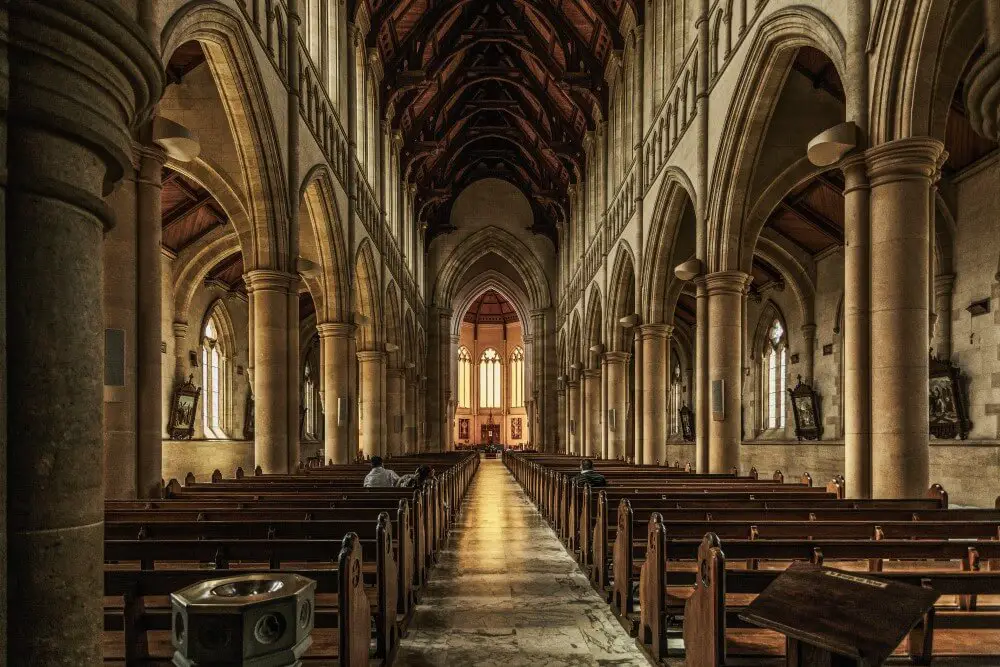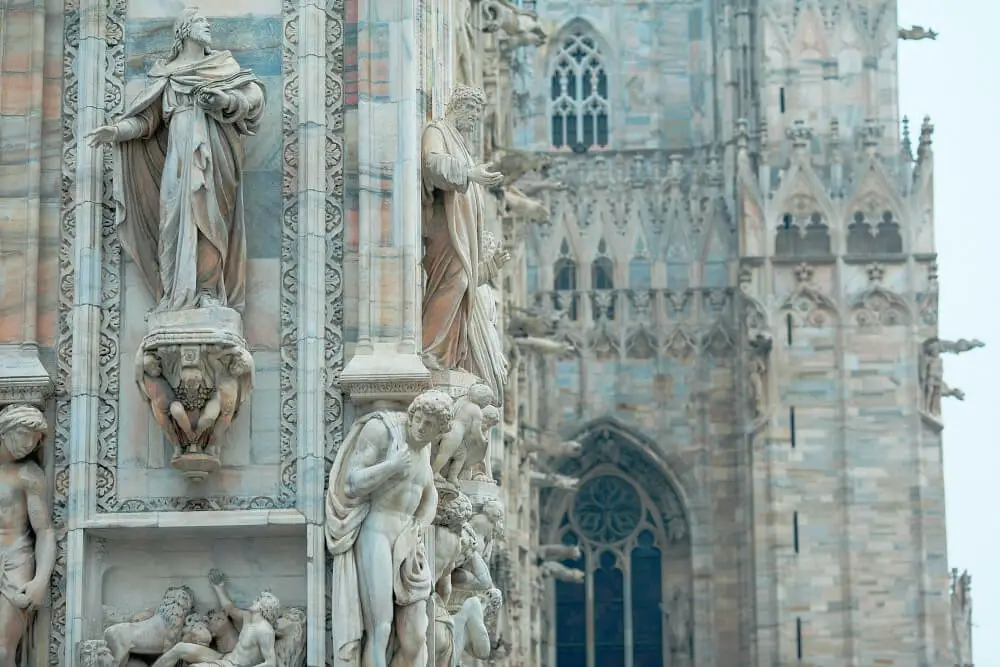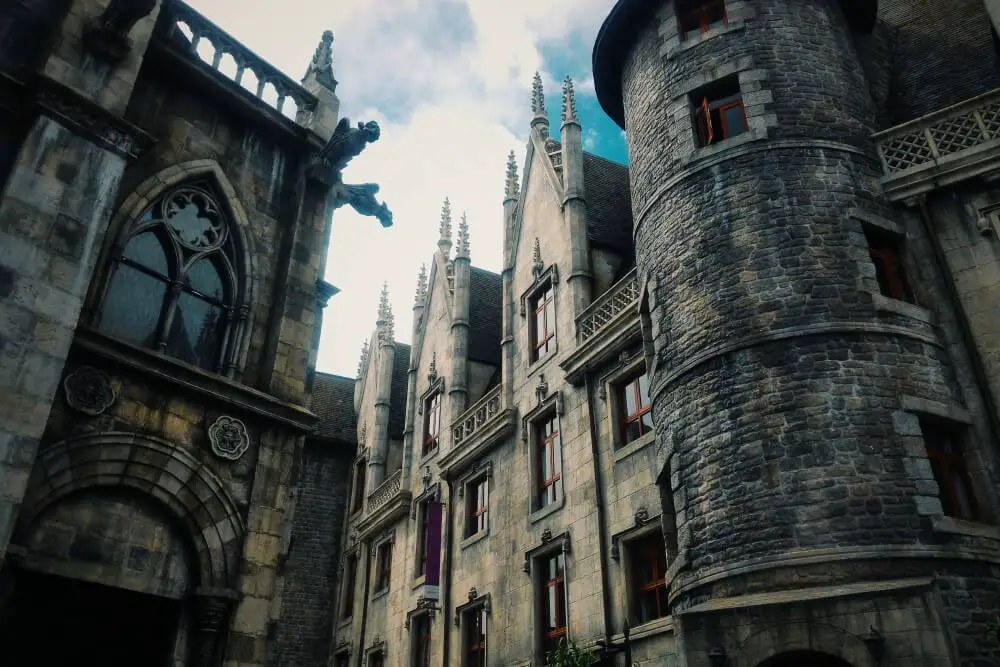Once upon a time, Gothic architecture was well-renowned as being the style employed on some of the world’s grandest buildings.
Even today, just by looking at some of the everlasting Gothic-inspired buildings of the world, from the Notre Dame to Lincoln Cathedral, you can’t help but argue that Gothic architecture has stood the test of time.
However, Gothic architecture has, in the intervening years, lost much of its popularity in new constructions. Very few buildings in the modern era are planned and completed in the Gothic style, with the exception of the odd design.
So, considering its obvious visual appeal and longevity through the ages, it’s worth asking the question: why do we no longer build in the Gothic style?
In short, there are a number of factors why we tend not to build in the Gothic style any more. These factors include how much Gothic buildings cost to build and repair, the fact that architectural fashion has moved on from Gothic architecture, and the lack of skilled stoneworkers required to complete its intricate ornamentation.
Read on to find out whether Gothic architecture is still utilised today, what the future is for Gothic architecture, and why the curtain may not be called on this once-revolutionary style quite yet.
But first, let’s look into the reasons why Gothic architecture has fallen out of fashion more closely.

Cost
One of the main reasons why architects and building planners now rarely incorporate the Gothic style is the combined cost of construction, maintenance and repair. For a start, it’s expensive to source the high-quality materials, such as stone or brick, that are needed for grand Gothic projects, particularly when there are cheaper modern alternatives available.
Added to this, the inherent characteristics of Gothic architecture also come into play. The style usually features intricate ornamentation, which not only requires skilled craftsmanship but also a long period of time to complete. Therefore, building planners would be paying a lot, for longer, than they would if they employed other architectural styles.
Also, there is simply less demand for Gothic style architecture as a whole than there was a couple of centuries ago. Due to this, costs are likely to be inflated on Gothic projects as the fees for specialists in this low-demand area will be high.
Outdated Fashion
The fact that Gothic architecture is not used often in the modern age may also be attributed to its outdated place in modern architecture. Gothic architecture is typically associated with a particular historical period, and, as such, it has a particular cultural context.
In its peak around the 12th and 13th Century, Gothic architecture was seen as cutting edge and revolutionary in the construction world. Its ability to allow buildings to draw in large amounts of natural light was seen as particularly groundbreaking.
However, over the next few centuries, the rise of Renaissance and Baroque styles began to take over and ushered in a new era for architecture. Since then, many different styles have come and gone, and architectural fashion has moved with the times.
Put simply, Gothic architecture in its original form became out-of-date and a relic of the past. And, despite the emergence of the 1740s neo-Gothic movement, it has generally not been able to recover the favour it once had among building planners.
Construction Techniques
The construction techniques needed to build a Gothic style structure also play a part in why Gothic architecture is not very popular in modern construction. For, there are numerous elements to the Gothic style that take high levels of experience to complete.
For example, just some of the building elements usually featured in Gothic style architecture include pointed arches, flying buttresses and rib vaults. These are features rarely seen on buildings in the modern era, so training modern builders to work on such projects would take a long time – something which most urban developers do not have.
So, easier-to-apply construction techniques are employed instead, to make the job of construction quicker and cheaper.
Skilled Stoneworker Requirements
Another obstacle for the popularity of Gothic architecture is the fact there is simply a lack of skilled stoneworkers available to craft its ornamental features. Where stoneworking was once a common trade in the Medieval period, it is now a specialist skill that only a few possess.
For large Gothic projects, finding the right amount of skilled stoneworkers needed to finish a project on time and within budget would likely be difficult.
Societal Connotations
Gothic architecture also has some specific societal connotations that building planners need to bear in mind. In particular, it has come to have symbolic significance in religious and artistic circles.
For example, Gothic architecture has for centuries been closely linked to Christianity, due to its frequent use in churches and cathedrals. And, due to the grandeur of these buildings, the Gothic style came to symbolise a certain wealth and opulence.
However, over time, it also began to represent something else. From the late 18th Century onwards, a lot of early horror and supernatural fiction began to use Gothic architecture as a backdrop for its stories, owing to the surreal imagery featured on its buildings. As a result, the style began to become associated with sinister and dark themes.
Although it was never the original intention for Gothic architecture to be represented in this way, other architectural styles, such as modernism or neo-classical, do not carry this weight of connotation. As a result, there may be added incentive for architects to stay away from the Gothic style.

Is Gothic architecture still used today?
Yes – just because Gothic architecture isn’t as popular as it once was, does not mean that it isn’t still used today! Although it’s now relatively rare to find entire buildings built in the Gothic style, modern architects regularly turn to Gothic elements, such as ribbed vaults and pointed arches, as part of their designs.
Even modern skyscrapers and tall buildings have taken inspiration from Gothic architecture. The style’s innovative use of building features promoted verticality in a way that had never been done before.
And, in historicist buildings, work continues to be carried out on Gothic structures. For instance, La Sagrada Familia in Barcelona, one of the most famous Gothic constructions in the world, will not be finished until 2026.
Will Gothic architecture come back?
In truth, it is hard to say whether Gothic architecture will make a comeback and once again become the predominant architectural style of our times. Architecture, like many fields, is swayed by contemporary fashion and tastes change according to societal preferences.
One key issue with Gothic architecture is that, due to its relatively high expense and time requirements, economic factors will play a huge role in its future popularity. Put simply, there are likely to be cheaper options out there for building planners in most cases.
However, there’s little to deny the enduring popularity of Gothic architecture in existing buildings, such as Notre Dame Cathedral, Westminster Abbey and La Sagrada Familia. With this in mind, there’s every reason why another Gothic Revival may be favoured by the general public.
It may be that, as has occurred in the past with neo-classical and neo-Gothic architecture, that the style will simply be reimagined or re-interpreted. But, we simply do not know what the future will hold for the Gothic style.
Should Gothic architecture be re-introduced?
There’s no right or wrong answer to whether or not Gothic architecture should be re-introduced. It’s up to the designer or architect in question to decide, considering the requirements of their project and the contextual factors surrounding it, whether they want to use it.
From an architectural standpoint, the Gothic style is still respected and admired by building lovers worldwide. The longstanding popularity of some of the world’s most famous Gothic buildings proves this.
So, it can be argued that Gothic style doesn’t need to be re-introduced, as it continues to play a big role in architecture.
We hope you’ve enjoyed our guide to why Gothic style buildings aren’t built any more. Anyone who appreciates architecture can admire the levels of detail and dedication that go into each Gothic building.
And it’s because of this, there will always be a place for the Gothic in modern architecture. Whether a new Gothic Revival is around the corner remains to be seen.
There are stunning examples of Gothic buildings located in cities around the world – explore some of them with our guide to 12+ Cities with Amazing Urban Design.
Or, if you’d like more general definitions on building and architecture vocabulary, take a look at our selection of building wikis – for example, what defines a purlin?
Last Updated on 29 January 2023 by Michael
